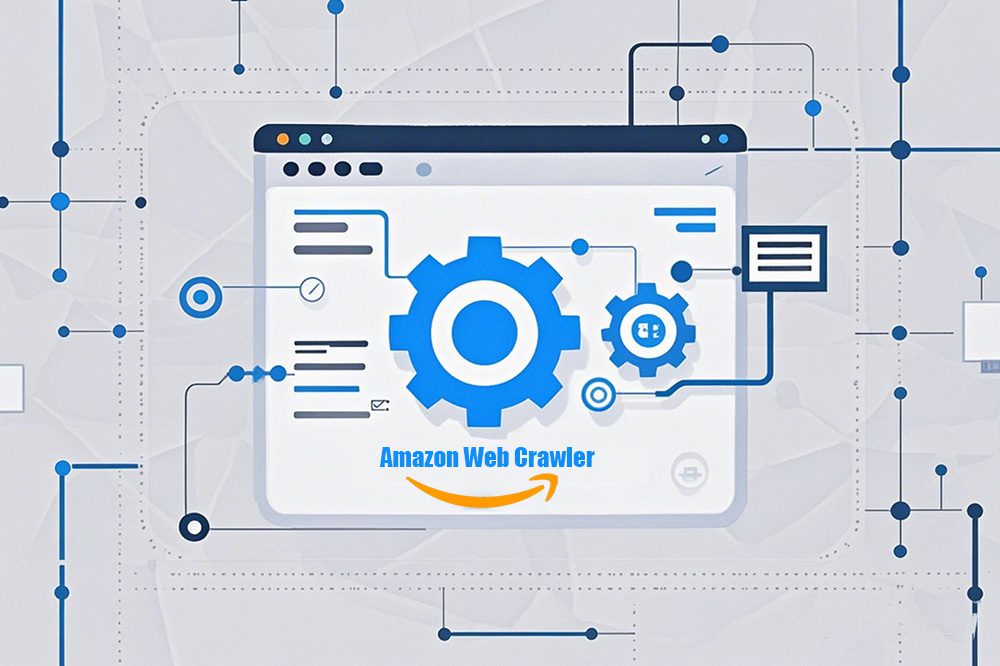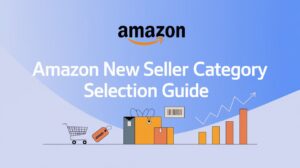Introduction
The Importance of Data in Amazon E-commerce
In the highly competitive world of e-commerce, data is one of the most valuable assets for sellers. From product listings, customer reviews, pricing trends, and stock availability to competitor analysis, data helps sellers make informed decisions. Amazon, being the largest online marketplace, offers an immense wealth of information that can be leveraged to boost sales, optimize marketing strategies, and enhance inventory management. The challenge, however, is accessing this data efficiently and reliably.
While Amazon provides its own set of APIs for certain data points, they are often limited in scope, especially for sellers or businesses needing a broader range of data. This is where building an Amazon Web Crawler comes into play. A well-built crawler enables you to collect large amounts of data from Amazon pages automatically, which can then be analyzed and integrated into your e-commerce strategies.
Why Build an Amazon Web Crawler?
Building an Amazon web crawler allows you to extract data directly from Amazon’s pages, bypassing the limitations of Amazon’s APIs. You gain control over the data you collect, the frequency of data retrieval, and the flexibility to structure the data according to your needs. Whether you want to monitor pricing changes, gather customer reviews, or analyze sales rankings, a custom-built crawler provides a tailored solution for your specific requirements.
In this guide, we will take you through the process of building a web crawler for Amazon from scratch, ensuring that your solution is efficient, ethical, and scalable.
Understanding Amazon’s Website Structure
Key Pages and Their Layouts
Before starting any web scraping project, it’s essential to understand the structure of the target website. Amazon’s layout is consistent across product pages, search result pages, and category pages, but slight variations exist between categories and regions. Here are some key types of pages you’ll encounter:
- Product Pages: These pages contain details about individual products, including title, price, availability, customer reviews, and product specifications.
- Search Results Pages: These display multiple products based on search queries, along with pagination controls for navigating through multiple pages of results.
- Category Pages: Similar to search results, but categorized by Amazon’s taxonomy, e.g., “Books,” “Electronics,” etc.
Identifying and mapping out the structure of these pages helps in determining which HTML elements contain the data you want to scrape. For example, product titles may be within <span> tags with specific classes, while prices may be stored in <span class="a-price"> elements.
Identifying Essential Data Points
To build an effective Amazon web crawler, you need to identify the exact data points required for your analysis. Some of the most common data points include:
- Product Title
- Price
- Availability (e.g., in stock or out of stock)
- Ratings and Reviews
- Product Description and Specifications
- ASIN (Amazon Standard Identification Number)
- Product Category
- Seller Information
For each of these data points, identify the corresponding HTML elements and attributes. This will be critical when you implement the HTML parsing functionality in your crawler.
Legal and Ethical Considerations
Amazon’s Terms of Service
It’s crucial to understand that web scraping Amazon is subject to its Terms of Service. Web scraping, if done aggressively, may violate their terms, potentially leading to account suspension or IP blocking. Make sure to review Amazon’s policies and avoid using the data for purposes that Amazon explicitly prohibits.
Respecting robots.txt and Rate Limits
Every website, including Amazon, has a robots.txt file that outlines the rules for web crawling. Amazon’s robots.txt might restrict or allow crawling on certain pages. Even though ignoring robots.txt may not be illegal, respecting these rules demonstrates ethical behavior and helps avoid potential issues.
Additionally, excessive scraping can overload Amazon’s servers, leading to IP blocking or CAPTCHAs. To avoid this, respect rate limits by implementing delays between requests and distributing requests over time.
Setting Up Your Development Environment
Choosing a Programming Language
Python is one of the most popular languages for web scraping due to its rich ecosystem of libraries and ease of use. Other languages like JavaScript (with Node.js), Java, or Ruby can also be used, but in this guide, we’ll focus on Python.
Essential Libraries and Tools
To build an efficient Amazon web crawler, you’ll need the following Python libraries:
- Requests: To send HTTP requests and receive responses from Amazon.
pip install requests- BeautifulSoup (part of the
bs4package): To parse HTML content and extract data.
pip install beautifulsoup4- Selenium: To handle dynamic content (JavaScript-heavy pages) and bypass CAPTCHAs.
pip install selenium- Pandas: To organize and store data in tabular form.
pip install pandas- Scrapy (optional): A powerful web crawling framework for more complex or large-scale scraping tasks.
pip install scrapySetting Up Selenium and WebDriver
For dynamic content, you’ll need to install Selenium WebDriver and configure it with your browser of choice (e.g., Chrome, Firefox).
- Download and install the ChromeDriver that matches your browser version from ChromeDriver’s official site.
- Point Selenium to the ChromeDriver executable:
from selenium import webdriver
driver = webdriver.Chrome(executable_path='/path/to/chromedriver')Designing Your Amazon Web Crawler
Defining the Crawler’s Architecture
The architecture of your Amazon web crawler depends on your needs and the complexity of the project. At its core, the crawler will perform the following steps:
- Send HTTP Requests: Fetch HTML content from Amazon.
- Parse HTML: Extract the required data points from the fetched content.
- Handle Pagination: Crawl multiple pages if needed.
- Store Data: Save the extracted data in a structured format (e.g., CSV, database).
Planning for Scalability and Efficiency
Your crawler should be scalable, especially if you plan to scrape a large amount of data. To achieve this, consider:
- Multi-threading: Process multiple pages simultaneously to speed up the crawling process.
- Proxy Management: Use rotating proxies to avoid getting blocked by Amazon.
- Error Handling: Implement retry mechanisms for failed requests due to server errors or connection timeouts.
Implementing Core Functionalities
HTTP Requests and Handling Responses
The Requests library will be used to send GET requests to Amazon’s product or search pages. Here’s an example of how to retrieve an Amazon product page:
import requests
from bs4 import BeautifulSoup
headers = {
'User-Agent': 'Mozilla/5.0 (Windows NT 10.0; Win64; x64) AppleWebKit/537.36 (KHTML, like Gecko) Chrome/58.0.3029.110 Safari/537.3'}
url = 'https://www.amazon.com/dp/B08N5WRWNW'
response = requests.get(url, headers=headers)
soup = BeautifulSoup(response.content, 'html.parser')Note: Always include a User-Agent header to mimic a real browser and avoid being blocked.
HTML Parsing and Data Extraction
With the page content loaded, use BeautifulSoup to extract data points. For example, extracting the product title:
title = soup.find('span', {'id': 'productTitle'}).get_text(strip=True)
print("Product Title:", title)Handling Pagination and Navigation
Many Amazon search result pages are paginated. You can use BeautifulSoup to find and follow the pagination links. Example:
next_page = soup.find('li', {'class': 'a-last'}).a['href']
if next_page:
next_url = 'https://www.amazon.com' + next_page
response = requests.get(next_url, headers=headers)
# Repeat parsing process for the next pageOvercoming Common Challenges
Dealing with CAPTCHAs and IP Blocks
To deal with CAPTCHAs and avoid IP blocking:
- Use Selenium to automate browser interactions.
- Rotate IP addresses by using proxy services.
- Implement request throttling to prevent aggressive scraping.
Example of Selenium for CAPTCHA handling:
from selenium import webdriver
driver = webdriver.Chrome(executable_path='/path/to/chromedriver')
driver.get('https://www.amazon.com/dp/B08N5WRWNW')
# Manually solve CAPTCHA or integrate CAPTCHA-solving servicesManaging Dynamic Content and AJAX Requests
For pages that load content dynamically (e.g., product reviews), use Selenium to wait for the content to load:
from selenium.webdriver.common.by import By
from selenium.webdriver.support.ui import WebDriverWait
from selenium.webdriver.support import expected_conditions as EC
driver.get('https://www.amazon.com/dp/B08N5WRWNW')
WebDriverWait(driver, 10).until(EC.presence_of_element_located((By.ID, 'productTitle')))Handling Different Product Categories and Layouts
Amazon’s layout may differ slightly across product categories. Ensure that your crawler is flexible enough to handle various structures by writing conditionals or adjusting your parsing logic for different page types.
Data Storage and Management
Choosing a Database System
Depending on the size of your dataset, you can choose between:
- SQLite for lightweight storage.
- MySQL or PostgreSQL for more robust database management.
- MongoDB for unstructured or semi-structured data.
Structuring and Organizing Extracted Data
For structured data, consider using a relational database where each data point corresponds to a table field. Example schema for product data:
CREATE TABLE amazon_products (
id SERIAL PRIMARY KEY,
title TEXT,
price NUMERIC,
rating NUMERIC,
availability TEXT,
asin VARCHAR(10)
);Use SQLAlchemy for Python-based ORM integration.
Maintaining and Updating Your Crawler
Adapting to Website Changes
Amazon may frequently change its layout or page structure. Regularly update your crawler to adapt to these changes. Implement logging to monitor errors and quickly identify when a page structure has changed.
Implementing Error Handling and Logging
Ensure robust error handling by implementing try-except blocks around network requests and HTML parsing. Log failed requests and parsing errors for debugging:
import logging
logging.basicConfig(filename='crawler.log', level=logging.ERROR)
try:
response = requests.get(url, headers=headers)
response.raise_for_status()
except requests.exceptions.RequestException as e:
logging.error(f"Error fetching {url}: {e}")Performance Optimization
Parallel Processing and Multi-threading
To speed up the crawling process, use Python’s concurrent.futures module to run multiple threads simultaneously:
from concurrent.futures import ThreadPoolExecutor
def fetch_page(url):
response = requests.get(url, headers=headers)
return response.content
urls = ['https://www.amazon.com/dp/B08N5WRWNW', 'https://www.amazon.com/dp/B08JG8J9ZD']
with ThreadPoolExecutor(max_workers=5) as executor:
results = executor.map(fetch_page, urls)Proxy Rotation and Session Management
Using rotating proxies helps avoid IP bans. Services like BrightData or ScraperAPI provide proxy management for web scraping. Integrate proxies in the requests:
proxies = {
'http': 'http://proxy.server:port',
'https': 'https://proxy.server:port',
}
response = requests.get(url, headers=headers, proxies=proxies)Testing and Validation
Ensuring Data Accuracy and Completeness
Test your crawler by cross-referencing the extracted data with actual Amazon data. Ensure the data is accurate, especially for critical fields like price and availability.
Stress Testing and Scalability Assessment
Run your crawler under various conditions to test its scalability. You can simulate high-traffic scenarios to ensure it remains responsive and doesn’t overload your systems or Amazon’s servers.
Alternative Solution: Pangolin Data Services
Introduction to Pangolin’s Amazon Data Solutions
Building an Amazon web crawler from scratch requires significant effort and maintenance. For those who prefer a ready-made solution, Pangolin Data Services offers APIs that provide real-time, structured Amazon data.
Benefits of Using Pre-built APIs and Tools
- No need for maintenance: Pangolin handles all updates and maintenance.
- Faster deployment: Start accessing data without developing your own crawler.
- Scalability: Easily scale your data collection needs without worrying about infrastructure.
Overview of Scrape API, Data API, and Pangolin Collector
- Scrape API: Provides access to structured data from Amazon product pages.
- Data API: Real-time data on product prices, reviews, and availability.
- Pangolin Scraper: Visualizes key data fields in an easy-to-use interface.
Conclusion
Building an Amazon web crawler from scratch involves understanding website structure, implementing efficient crawling mechanisms, and addressing common challenges like CAPTCHAs and IP blocks. While a DIY solution offers flexibility and control, professional data services like Pangolin provide a hassle-free alternative with ready-made APIs. Evaluate your needs to determine the best approach for extracting and leveraging Amazon data.






